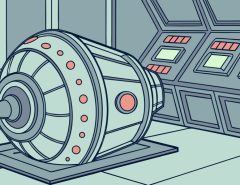Whether you are a professional lawn mower, a recent homeowner who is getting into gardening and maintaining their backyard, or anyone in between, understanding the humble trimmer head is a must.
Grass trimmer heads are attached onto machines known as string trimmers, brush cutters or whipper snippers, and help said machine in mowing grass. String trimmers are a must-have tool for your garden or yard, and maintaining the trimmer head, and knowing when it needs replacing is vital.
3 Types of Grass Trimmer Heads
Based on the string trimmer you own, and the use you have for it, there are three main types of trimmer heads on the market, each with their pros and cons. The one you use comes down to preference, the machine you own and the application you have for it.
Bump Feed Systems
A bump feed system works by ‘bumping’ or lightly tapping the bottom of the trimmer on the ground. Varied lengths of line are wound around the trimmer spool, with two equal lengths fed through trimmer head openings in this system. When the spring system releases the line through the line outlets, the line advances.
Bump feed trimmer heads are consistent and easy to use, hence making them the most popular choice. They allow you to control how much line you use, and since it is a simplified system, it is easy and quick to make repairs. On the other hand, the spring in the trimmer head will eventually wear out and need replacement with continuous use.
Automatic Feed System
Gaining in popularity, the automatic feed system uses a line-spooling motor as well, and requires no effort when the whipper snipper is in use. In this system, the trimmer will release more line when it starts to run short, thanks to an advanced internal system that gauges the current length of the line. Since there is no bumping involved here, it is less likely you will break your brush cutter, and the automatic release of line makes it easier to get the job done faster. It’s perfect for someone just getting into trimming their lawn.
As such, trimming is faster with an automatic feed system, however, fixing or repairing is much more tedious and expensive than a bump feed system. Another disadvantage is the lack of control on how much line you end up using. So, choosing between this and a manual bump feed system comes down to preference and which trade-off you are willing to make.
Fixed Head Systems
A fixed head, or fixed line system, uses individual lengths of line that are loaded into the trimmer one at a time, as needed. The overall process of dealing with the trimmer is less cumbersome since you don’t need to wind the line onto the trimmer head. A fixed head system is best utilised under more commercial or larger settings, and uses tougher and thicker string. This reduces wear and potential breaks of line, hence reducing the pauses you might have to take. On the flip side, you would have to stop your trimmer every time you need to replace the line in it.
How Do Grass Trimmer Heads Work?
Whipper snippers and trimmer heads may seem like simple devices, but there is a robust system of parts that must work in unison to make a trimmer head work. A drive shaft is attached to the trimmer head which is engaged by a centrifugal clutch that is connected to the crankshaft of the engine. When the trigger is pulled, the throttle on the carburettor accelerates the engine. This causes the clutch flyweights to engage the drive shaft, which in turn rotates the trimmer head.
As the trimmer head rotates, the line is spread out which then cuts through grass, foliage or weeds. The thickness of the line depends on the model you are using, and the way the line is released depends on the feed style of your string trimmer, as discussed above.
When Should I Use a Trimmer Head?
A trimmer head on a string trimmer or brush cutter comes in handy when you need to reach spots that a lawnmower can’t. Lawnmowers tend to be bulky and heavy, so the lightweight string trimmers with their compact trimmer heads are the perfect tool to complement them and achieve a better finish. This is the primary use of a string trimmer: mowing down grass and getting rid of weeds near fences, driveways, steps and footpaths. It is also helpful to navigate around difficult or delicate spaces, like close to a flower patch or garden bed, letting you mow around them with ease, which you can’t conveniently do with a lawnmower. The compact head helps achieve that even level and well-manicured look that we all crave for our lawns and backyards, by allowing you to reach spots that you might have missed or had to avoid with your lawnmower.
A string trimmer head can also be used for edging your lawn. While tools like lawn edgers exist, a string trimmer can fill in that role too, if you want to get the most out of a single device and not clutter your shed with too many machines. When held at an angle, a string trimmer can provide the same finish that a lawn edger can, and help create a crisp line free from grass and weeds along the edge of a footpath or patio.
A trimmer head is a useful tool to have in your arsenal of gardening machines, and its versatility means you can use it for general upkeep of your green patch, and even for the more cosmetic and aesthetic purposes that would make your lawn stand out and look its best.
When Should You Replace Your Trimmer Head?
Just like any other machine or gadget, a trimmer head is not immune to the effects of wear and tear that comes with extended use. A trimmer head will need to be replaced if it breaks or wears out. Sometimes, your trimmer head will feel unbalanced and inconvenient to use: this is a sign it needs to be replaced.
Your trimmer head may also need replacing if it gets damaged due to erratic spinning from a clutch failure, or a loose nut or bolt somewhere in the machine. It is important to know and understand the issue you are facing with your trimmer head, before deciding if you need to replace it, or if an external fix would do the trick, like tightening a bolt or repairing the clutch.
How to Replace Your Trimmer Head?
If you need to replace a trimmer head on your string trimmer or whipper snipper, these 10 steps should come in handy. It is still good practice though to go through your product’s user manual, since there might be minor differences between models or the steps you may need to take.
- Take off the spark plug before you get to replacing your trimmer head to avoid it turning on accidentally and causing potential injuries
- Push a screwdriver or the supplied pin into the output shaft at the back of the gear head. Push it in as far as it goes to block the shaft.
- Unscrew the trimmer head from the shaft by twisting it clockwise.
- Find the thrust plate if it came off when you removed the trimmer head. The thrust plate is round and flat, with a hole in the centre. Find the mounting nut and thrust washer, which may be supplied with your new trimmer head, or find the ones that came with your trimmer.
- Slide the thrust plate onto the shaft and ensure it is not unbalanced and is centred on the gear head.
- Slide your new trimmer head onto the shaft over the thrust plate, and ensure the mounting holes of the trimmer head and the gear head align with each other.
- Place the thrust washer onto the shaft, so it stays against the cutting head’s base.
- Block the output shaft again with the pin, in case you removed it when taking out the old trimmer head. If it is still in place, ensure it is pushed all the way down.
- Screw the nut anticlockwise onto the shaft using a wrench, and tighten it to secure the trimmer head. Remove the pin from the output shaft.
- Put the spark plug back in, and test your new trimmer head, while maintaining all safety precautions.
Buy a Trimmer Head for Your String Trimmer Online
Online stores have a sizeable collection of trimmer heads for your whipper snippers, ready for when you need to replace your old one, or even to just keep a back-up handy in case things go south.




